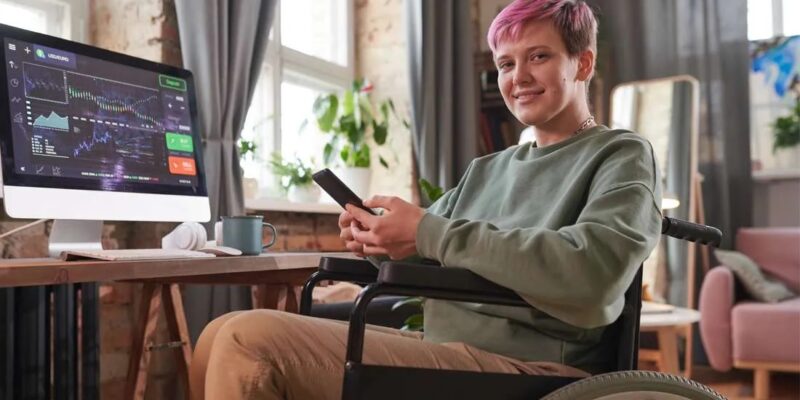
Assistive Technology – a snapshot
Assistive technology covers devices, software programs, peripherals, etc., backed by modern technology and focused on improving the lives of people with disabilities. People suffering from some sort of ailment, deformity, or old age might not be able to lead an everyday life. They need to depend on caregivers to perform mundane tasks in daily life. This condition robs them of their self-confidence and dignity. Assistive technology gives them a better life by aiding them to perform everyday tasks by themselves. It helps them quickly access places and regain their independence by enabling them to move or express themselves freely.
5 assistive devices to check out
Blindness & visual impairment – Prescription glasses are used widely to correct vision-related issues. Also, to support people with blindness, there are many assistive devices. Braille books have been there for long. Microsoft Narrator is part of the Windows 11 suite that uses text-to-speech software that automatically translates text into computer-generated speech. Many other apps and programs are available to help the visually challenged.
Hearing impairment – Hearing aids are commonly used by the deaf and hard of hearing. However, much research and advancements have occurred in this category. There are various hearing assistive devices, personal amplifying systems, Radio wave devices, Bluetooth devices, etc. These devices can be chosen based on the need and integrated with devices like smartphones, earphones, or hearing aids.
Speech difficulties – Advanced AAC devices help people with speech disorders by translating a set of pictures or words into speech. They may also contain a display panel to express what the user is trying to communicate. Stephen Hawking, one of the most outstanding scientists of modern times with speech disorders, used these devices to describe his theories to the world. The text-to-speech transcription software works in real-time and offers freedom of expression to people suffering from speech or language disorders.
Immovability – To help people suffering from immovability, there are a wide range of devices to increase accessibility. Electric wheelchairs are the most common these days. These mobility chairs are portable, lightweight, and travel-friendly. Also, these chairs are battery-operated and can travel long distances once charged. These devices help disabled people move freely without human assistance or manual labor. Access ramps, lifts, and hoists are some options to install in public places or homes for better access. Bathroom transfer systems are a specific category of assistive devices that allow the person to have easy access to the washroom without compromising privacy. Walkers, crutches, braces, and prosthetic limbs are also common in usage.
Smart homes – With Alexa, Homepod, or Google Home, smart home assistants create a stir worldwide. With simple commands, these devices can perform several tasks, like controlling the smart appliances at your home, once integrated. Robot vacuum cleaners are also gaining popularity, reducing human labor significantly and getting things done as per instructions while the owner can focus on other essential activities.
Challenges to overcome
The assistive devices industry, backed by AI, ML, and other modern technologies, has successfully changed the lives of billions of affected people with its multiple benefits. However, a few challenges must be addressed for a wider reach and availability of disability-friendly devices among the masses. Distribution and after-sales service processes need to be streamlined so more people can benefit. Also, the pricing factor must be considered to make these devices and technology affordable for common people. Social awareness needs to be increased. Policies must be altered to ensure the inclusivity of people with disabilities in education, the workplace, and civic circles.
Parting words
Assistive technology, with its widespread applications in various domains, has remarkably impacted the lives of people suffering from disabilities. The potential is huge, and the future looks brighter. With technology evolving human lives for a better living experience, the lives of disabled people have also improved for sure. It has improved the quality of life by providing better access and independence, protecting freedom, individual rights, and dignity, and ensuring the well-being of the disabled community.











